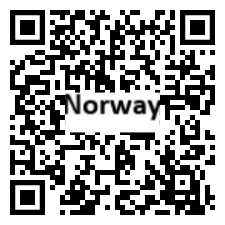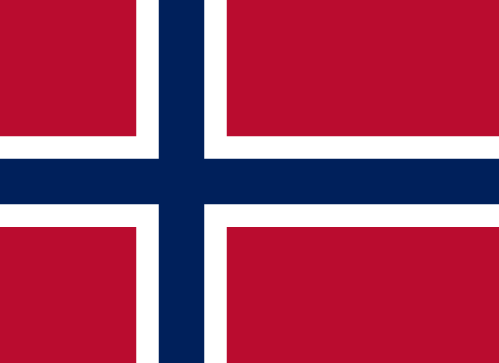Introduction
Background
Two centuries of Viking raids into Europe tapered off after Christianity was adopted in 994. In 1397, Norway was absorbed into a union with Denmark that lasted more than four centuries. Rising nationalism throughout the 19th century led to a 1905 referendum granting Norway independence from Sweden.
Geography
Area
total : 323,802 sq km
land: 304,282 sq km
water: 19,520 sq km
Climate
temperate along coast, modified by North Atlantic Current; colder interior with increased precipitation and colder summers; rainy year-round on west coast
Natural resources
petroleum, natural gas, iron ore, copper, lead, zinc, titanium, pyrites, nickel, fish, timber, hydropower
People and Society
Population
total: 5,509,733
Ethnic groups
Norwegian 81.5% (includes about 60,000 Sami), other European 8.9%, other 9.6% (2021 est.)
Languages
Bokmal Norwegian (official), Nynorsk Norwegian (official), small Sami- and Finnish-speaking minorities; note - Sami has three dialects: Lule, North Sami, and South Sami; Sami is an official language in nine municipalities in Norway's three northernmost counties: Finnmark, Nordland, and Troms
Religions
Church of Norway (Evangelical Lutheran - official) 67.5%, Muslim 3.1%, Roman Catholic 3.1%, other Christian 3.8%, other 2.6%, unspecified 19.9% (2021 est.)
Population growth rate
0.59% (2024 est.)
Government
Government type
parliamentary constitutional monarchy
Capital
name: Oslo
Executive branch
chief of state: King HARALD V (since 17 January 1991)
head of government: Prime Minister Jonas Gahr STORE (since 14 October 2021)
Legislative branch
description: unicameral Parliament or Storting (169 seats; members directly elected in multi-seat constituencies by list proportional representation vote; members serve 4-year terms)
Economy
Economic overview
high-income, non-EU economy with trade links via European Economic Area (EEA); key European energy security role as leader in oil, gas, and electricity exports; major fishing, forestry, and extraction industries; oil sovereign fund supports generous welfare system; low unemployment; inflation and response hampering growth in non-energy sectors
Real GDP (purchasing power parity)
$499.528 billion (2023 est.)
$496.973 billion (2022 est.)
$482.472 billion (2021 est.)
Real GDP per capita
$90,500 (2023 est.)
$91,100 (2022 est.)
$89,200 (2021 est.)
Agricultural products
milk, barley, wheat, potatoes, oats, pork, chicken, beef, eggs, rye (2022)
Industries
petroleum and gas, shipping, fishing, aquaculture, food processing, shipbuilding, pulp and paper products, metals, chemicals, timber, mining, textiles
Exports
$228.625 billion (2023 est.)
$327.706 billion (2022 est.)
$203.228 billion (2021 est.)
Exports - partners
Germany 27%, UK 21%, France 9%, Belgium 7%, Sweden 6% (2022)
Exports - commodities
natural gas, crude petroleum, fish, refined petroleum, aluminum (2022)
Imports
$157.032 billion (2023 est.)
$161.645 billion (2022 est.)
$140.331 billion (2021 est.)
Imports - partners
Sweden 18%, Germany 11%, China 10%, Denmark 6%, Netherlands 6% (2022)
Imports - commodities
cars, refined petroleum, ships, garments, nickel (2022)
Exchange rates
Norwegian kroner (NOK) per US dollar -
Page last updated: Wednesday, July 24, 2024




